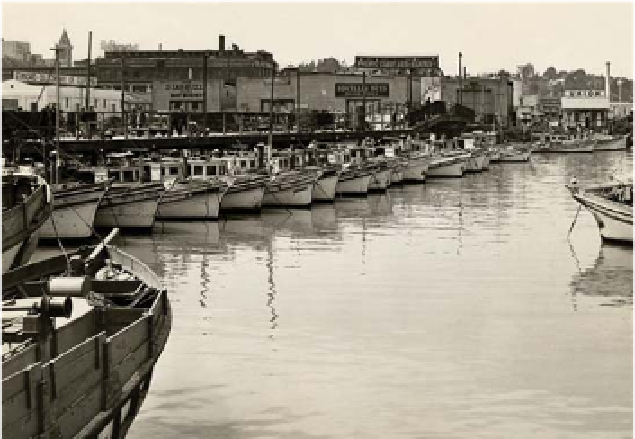Biology Reference
In-Depth Information
“Monterey clipper.” The clipper could go after more species and spend
multiple days at sea outside the Golden Gate. Venturing as far as Monterey
to the south, the fleet brought more catch back to the canneries and pack-
ing plants all around the bay, and trucks, railroads, and ships carried more
of these products to other parts of the country and abroad.
The seafood processing and distribution system boomed around the
bay. Fish deliveries to San Francisco averaged about 43 million pounds per
year between 1920 and 1950, but they fluctuated wildly from year to year
with the ups and downs of natural ocean cycles and the size of the fishing
fleet. This was a time when a turn-of-the-century lag in the local fishing
industry revived, when most of the activity moved outside the Golden
Gate, and when limits on catch and recognition of the bay's importance as
a nursery ground for future catch grew.
The local crabbing boats, equipped with pots to trap San Francisco's
signature Dungeness Crab, numbered 200-250 vessels during this period,
and often pulled 90 percent of the total statewide catch from coastal waters
offshore of San Francisco Bay. Meanwhile, the Chinese shrimping camps
around the bay flourished. Sport fishing for Striped Bass gathered popu-
larity in the delta, and charter boats for day fishing trips both to the ocean
and upstream were moored side-by-side with the commercial fleet in San
Francisco.
But the biggest boom in the region's fishing history came in the 1930s,
when San Francisco Bay suddenly became one of the three major sardine
Fishing boats at San Francisco's Fisherman's Wharf in the 1940s. (S.F. History
Center, S.F. Public Library)


